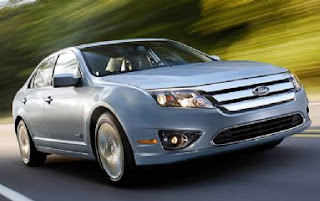 Toyota Corolla Altis new faces have started to be marketed in May 2010 and in Europe. Although still carrying the same machine, but it looks more fresh made. Look at the front bumper design, as well as upper and lower grille. Also included new headlights.
Toyota Corolla Altis new faces have started to be marketed in May 2010 and in Europe. Although still carrying the same machine, but it looks more fresh made. Look at the front bumper design, as well as upper and lower grille. Also included new headlights.Altis Grill 2000 cc facelift uses two chrome trim. Accents that give the impression of Altis as a car that likes racing. But not only that, the bumper design was also changed. Design Altis 2000 cc facelift more commensurate with chrome trim.
Besides design changes and Sein rim on the rear view mirror, on the stern of the brake lights also changed the style, as well as license plate holder and bumpers. While stoplamp Altis 2000 cc facelift more oval than 2000 cc of the previous Altis. Accents Sein circle as a marker lights or lamps do not miss the stop sign by the designer. Another difference appears in foglamp home design. Toyota Altis facelift adopt a rather large house. Does not seem difficult to recognize. Old and new models still carry the scent of a sporty yet dynamic. Now get into the cabin, the touch occurred on the steering wheel, as well as an elegant silver tone on the instrument panel, center console and lock button, and a layer of a more comfortable seat.
Toyota also pin a new feature, so that the owners New Altis will not bother to open the trunk because the trunk opening system in a wireless remote control terintegasi













































 In the form of encouragement can act: discounts for the subsequent purchases, accumulation of points (which can be transformed further into free privileges), special attention to the participant of the program, the preliminary notification about the beginning of special sales, dispatch of information leaflets with programs and news etc.
In the form of encouragement can act: discounts for the subsequent purchases, accumulation of points (which can be transformed further into free privileges), special attention to the participant of the program, the preliminary notification about the beginning of special sales, dispatch of information leaflets with programs and news etc. Thus, the forthcoming trip to the shop will be brightened up by a discount anticipation in $5~10US. For example, the
Thus, the forthcoming trip to the shop will be brightened up by a discount anticipation in $5~10US. For example, the 












